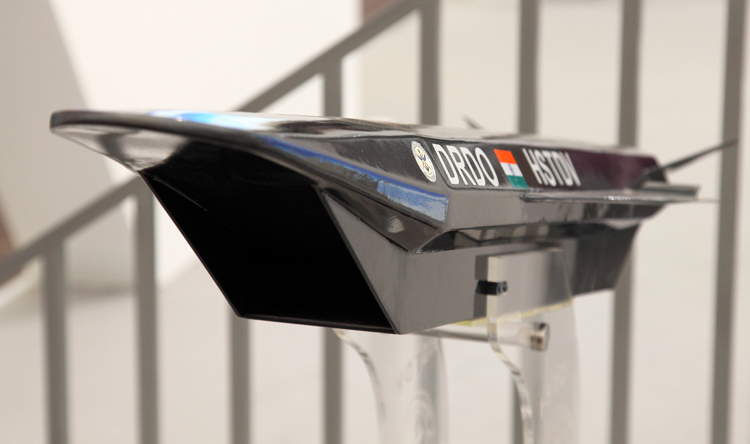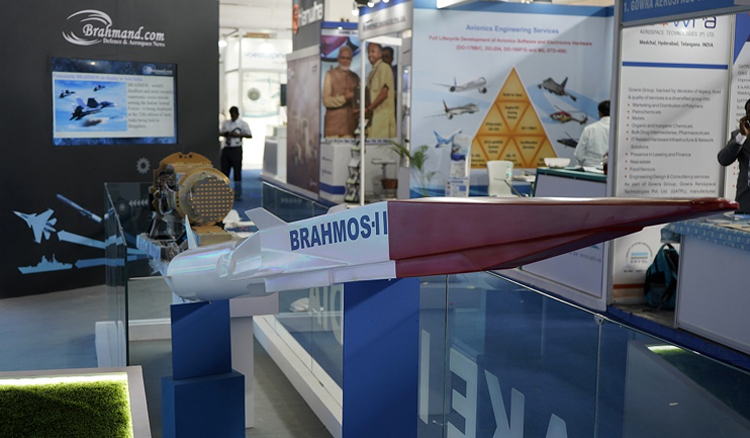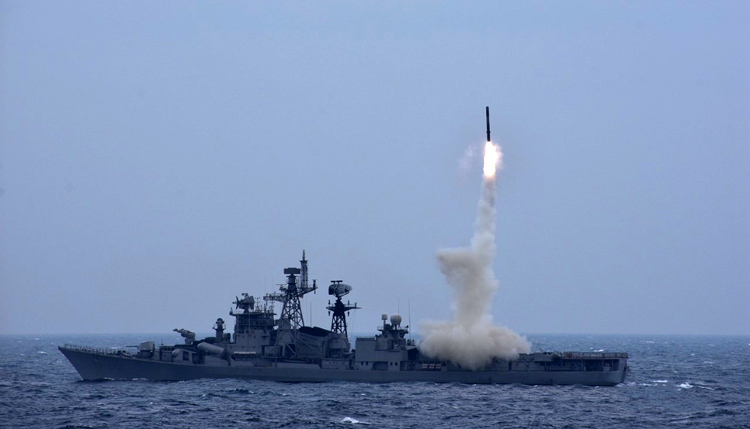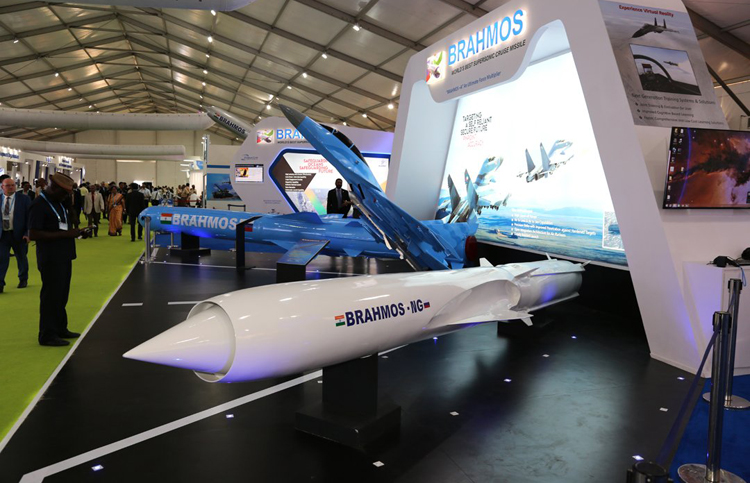INDIAN ARMED FORCES CHIEFS ON OUR RELENTLESS AND FOCUSED PUBLISHING EFFORTS

The insightful articles, inspiring narrations and analytical perspectives presented by the Editorial Team, establish an alluring connect with the reader. My compliments and best wishes to SP Guide Publications.

"Over the past 60 years, the growth of SP Guide Publications has mirrored the rising stature of Indian Navy. Its well-researched and informative magazines on Defence and Aerospace sector have served to shape an educated opinion of our military personnel, policy makers and the public alike. I wish SP's Publication team continued success, fair winds and following seas in all future endeavour!"

Since, its inception in 1964, SP Guide Publications has consistently demonstrated commitment to high-quality journalism in the aerospace and defence sectors, earning a well-deserved reputation as Asia's largest media house in this domain. I wish SP Guide Publications continued success in its pursuit of excellence.
India's Hypersonic Cruise Missile
India became the fourth country after the US, China and Russia to develop and test the hypersonic technology. With this successful test, India will be making its first hypersonic missile in the next five years.
 |
The Author is Former Director General of Information Systems and A Special Forces Veteran, Indian Army |

On September 7, 2020, India had successfully test-fired the Hypersonic Technology Demonstrator Vehicle (HSTDV). Defence sources said the hypersonic combustion sustained and the cruise vehicle continued on its desired flight path at a velocity of six times the speed of sound for more than 20 seconds. Apart from being used as a vehicle for hypersonic long-range cruise missiles, the HSTDV is a dual-use technology that will have multiple civilian applications, including the launching of small satellites at low cost.
With the above successful test, India became the fourth country after the US, China and Russia to develop and test the hypersonic technology that will lead to developing missiles that would travel at six times the speed of sound. Defence sources had also said that with this successful test, India will be making its first hypersonic missile in the next five years.

The latest news is that Atul Rane, CEO of BrahMos Aerospace, speaking to Russia’s state-owned TASS news agency on August 1, 2022, said that the hypersonic version of India’s BrahMos cruise missile (BrahMos-II) is likely to have the same performance characteristics as Russia’s Tsirkon (Zircon) missile. The BrahMos-II hypersonic cruise missile is supposed to succeed the Indian Navy’s BrahMos supersonic anti-ship cruise missile.
The hypersonic version of India’s BrahMos cruise missile (BrahMos-II) is supposed to succeed the Indian Navy’s BrahMos supersonic anti-ship cruise missile
According to Rane, it would take up to five or six years before the first flight trial of BrahMos-II could begin. Rane also said that both the Indian and Russian sides are working on the design of the hypersonic BrahMos version. There was speculation in foreign media last year that the BrahMos II hypersonic cruise missile, is expected to develop a speed exceeding Mach 6, possibly reaching Mach 8, and a range of 600 kilometers that could be extended to 1,000 kilometers.
Now Rane says, “The whole world is working on a hypersonic cruise missile. The US and China are developing hypersonic versions of their cruise missiles. But they do not have them yet. I have not seen anyone in the world having hypersonic cruise missiles.” But he also noted, “Russia says it tested the Tsirkon hypersonic anti-ship cruise missile developed by NPO Mashinostroeniya.”

India has exported the BrahMos cruise missiles to the Philippines and is reportedly in advanced stage of talks with Indonesia who are seeking ship-borne variant of the BrahMos cruise missile for its warships. However, Rane has said that the hypersonic version of the BrahMos missile would be costly and would not be exported – only to be deployed by India and Russia. India is party to the Missile Technology Control Regime (MTCR), which allows development of a missile with a range of over 300 kilometers and weight of more than 500 kgs but not their export. India already has BrahMos missiles of 500 km range but the export version is capped at 290 km range in compliance with the MTCR.
The hypersonic version of the BrahMos missile would be costly and would not be exported – only to be deployed by India and Russia
There is also ambiguity whether the BrahMos II hypersonic cruise missile will carry only conventional warhead or both conventional and nuclear warheads like Russia’s Tsirkon. However, given the expanding nuclear weaponry of China, without doubt the BrahMos hypersonic cruise missile will have the capability of carrying both the conventional and nuclear warheads.

BrahMos Aerospace is also developing the next generation BrahMos – ‘BrahMos NG’. The BrahMos NG is smaller in size (6 metres long) compared to the original BrahMos and weighs 1.6 tonnes. The original BrahMos weighs three tonnes and is nine metres long. The BrahMos NG has a range of 290 km and can attain speeds of up to Mach 3.5. Due to its lesser radar cross-section, the BrahMos NG is more difficult for enemy air defence systems to locate and engage. The BrahMos NG will have active electronically scanned array (AESA) radar instead of the mechanically scanned radar on the BrahMos PJ-10. The BrahMos NG will have a land-based variant for the Indian Army, a variant for the Indian Air Force and a ship and submarine-compatible variant for the Navy.
The Sukhoi Su-30 MKI will be able to carry five BrahMos NGs at a time, instead of only one BrahMos presently. MiG-29s and the indigenous LCA Tejas will also benefit from the BrahMos NG, as will be the newly inducted Rafales. A senior defence official has said, “India’s combat power will increase exponentially with the lethality, versatility and portability of the BrahMos NG and BrahMos-2. With the threat from China growing by the day, the BrahMos NG will potentially be a force multiplier for the Indian Armed Forces.”
Given the expanding nuclear weaponry of China, without doubt the BrahMos hypersonic cruise missile will have the capability of carrying both the conventional and nuclear warheads
In October 2021, Russia conducted the first tests of the Tsirkon hypersonic missile from the Northern Fleet’s Severodvinsk nuclear-powered submarine. In December 2021, President Putin announced that the Tsirkon hypersonic missile had completed the salvo launch. In May 2022, the final test was carried out with the Tsirkon missile fired from aircraft carrier ‘Admiral Gorshkov’ to the maximum range of 1,000 km from the Barents Sea on naval target in the White Sea.
On the occasion of Russia’s Navy Day on July 31, 2022, President Putin announced that the Tsirkon missiles will be first deployed on the Northern Fleet’s Admiral Gorshkov frigate. The Tsirkon missiles are set to enter the Russian military service before September 2022 as serial production had already begun earlier. Presently, only the aviation and sea-based variants of the Tsirkon are known to exist but according to foreign media, Russia is also developing a new coastal missile system to launch the Tsirkon missile which can hit both land-based and sea-based targets.
Because of the tremendously high speed of the Tsirkon, the air pressure in front of the missile is said to create a plasma cloud that traps radio waves, making it near invisible to radar systems. The Tsirkon missile can reportedly evade the most sophisticated American air defence systems. According to experts, it could easily defeat the US’ Aegis Combat System and it is believed that the Tsirkon can sink even the most advanced American aircraft carriers.





